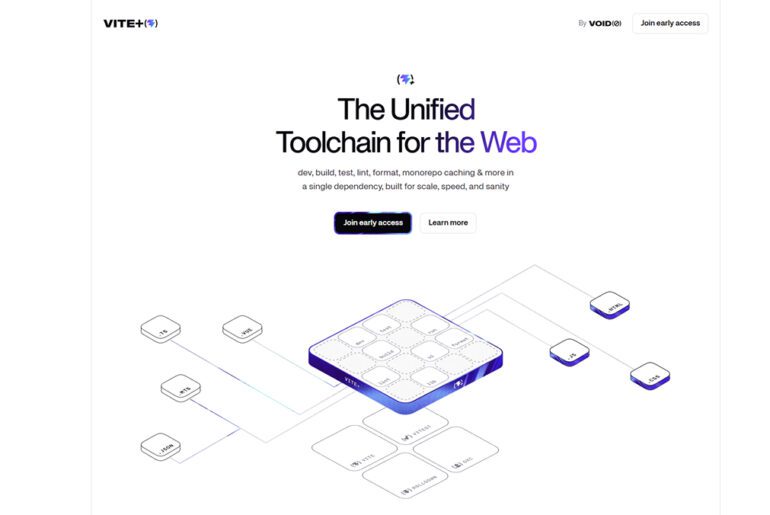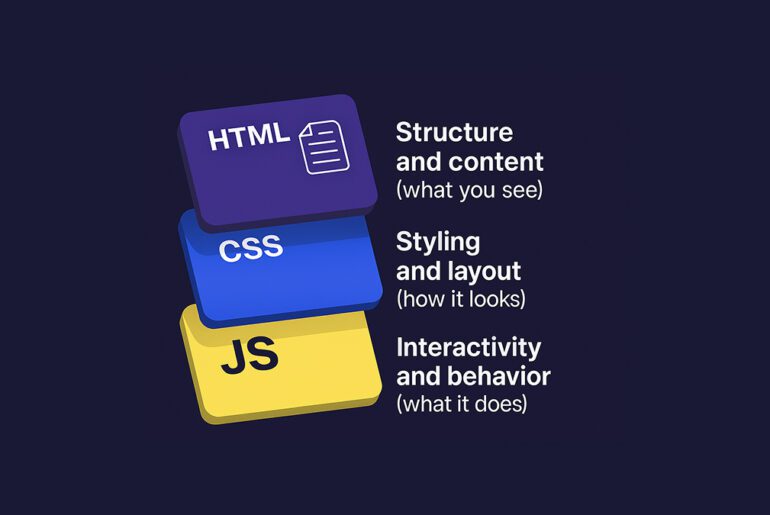You probably know React itself is a UI library, not a full framework. Over time, developers built “meta-frameworks” or full stacks around React to solve recurring challenges (routing, data fetching, SSR, static generation, etc).
In the early days, alternatives like Create React App (CRA) dominated the scaffolding space. But as needs grew (SEO, performance, dynamic rendering), frameworks like Next.js and Gatsby rose. Now in 2024–2025, we’re in a more fragmented but also more powerful era. React Server Components, edge computing, and new rendering patterns are reshaping how those frameworks compete and evolve.
In February 2025, React’s maintainers officially deprecated Create React App (moving it to maintenance mode) and encouraged using frameworks instead.
So if you’re choosing a React stack today, you’re not just choosing “React + router + data tools” — you’re choosing a framework ecosystem that shapes development patterns, performance, and even deployment.
In this guide I’ll walk you through the most popular, battle-tested React frameworks in 2025, point out where they shine (and where they struggle), and help you pick what fits your project.
What “React framework” means in 2025
Before diving into names, let’s clarify what I mean by “React framework” in this guide:
- These are not just router libraries; they bundle routing, rendering mode choices (SSR, SSG, CSR, sometimes edge rendering), data handling conventions, deployment patterns, etc.
- Some are “meta frameworks” built on top of React; others are full-stack or full configuration approaches.
- Many are evolving to embrace React’s newer capabilities (Server Components, Suspense, streaming, etc).
As the landscape changes, being “framework-aware” is as important as knowing React internals. According to trend watchers, choosing underlying frameworks has become more complex and significant as React itself shifts toward server-driven rendering.
These are the frameworks most talked about, most used, or most recommended in 2024–2025.
Next.js
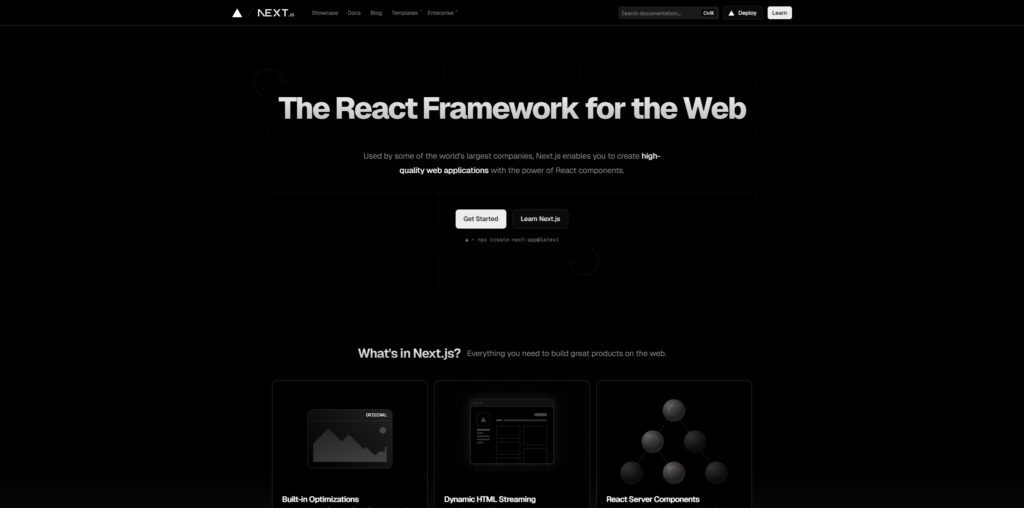
Next.js remains the de facto standard for many React teams. It is maintained by Vercel and offers hybrid rendering (SSR, SSG, CSR, Edge), built-in routing, API routes, incremental static regeneration, and now a Rust-based bundler (Turbopack) in its newer versions.
Because of its maturity, ecosystem, and tight integration with modern deployment platforms, many teams default to Next as a safe choice.
Here’s a minimal Next.js page using App Router and server component:
// app/page.jsx
export default function Page() {
const data = await fetch('/api/hello').then(r => r.json());
return <div>Hello {data.name}</div>;
}Next.js continues to push toward more flexibility (edge functions, middleware, React Server Components), making it a solid bet for performance and longevity.
Remix (aka React Router since v7)
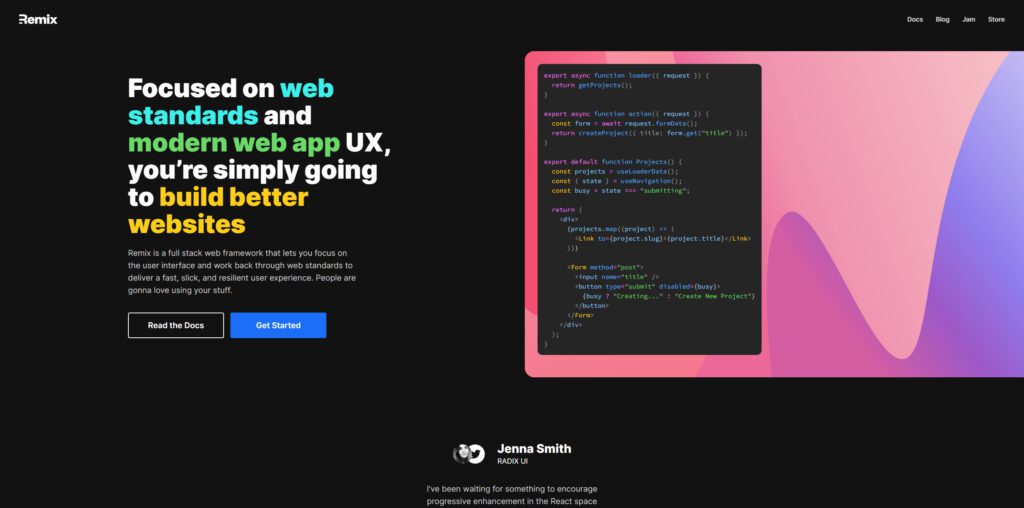
Remix has carved out a niche as a version of React that emphasizes progressive enhancement, nested routing, and data loading patterns. In November 2024, it rebranded to “React Router” (version 7) while maintaining its full-stack capabilities.
Remix’s appeal lies in its routing model (nested routes where each route loads its own data) and fine control over fetch behavior, error boundaries, and transitions.
Gatsby
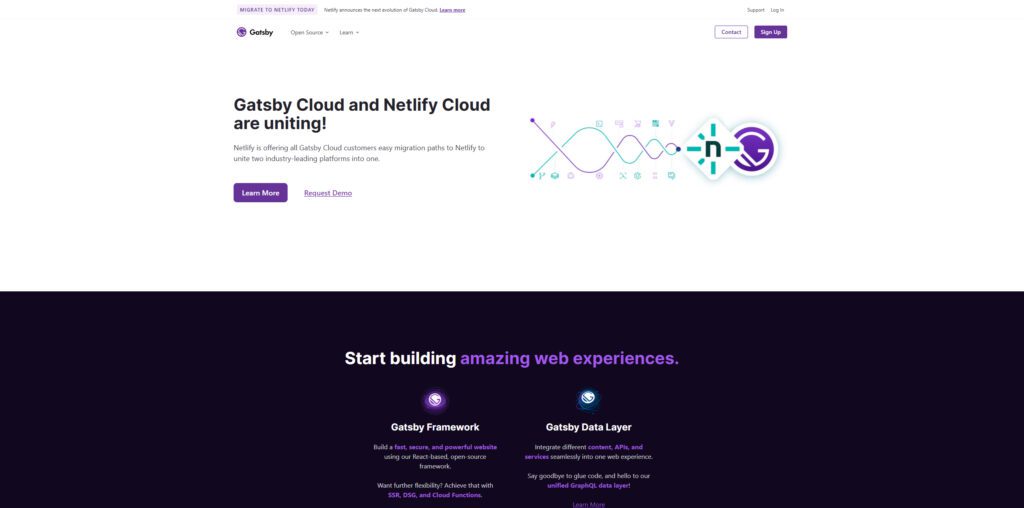
Gatsby historically was the go-to for React static sites and content sites (blog, marketing site) with GraphQL integration. It still holds appeal for content-heavy sites, although its popularity has been somewhat challenged by newer hybrids that can do both dynamic and static.
Gatsby gives you a strong plugin ecosystem and is still a solid choice if your site is largely content and you want excellent performance.
RedwoodJS
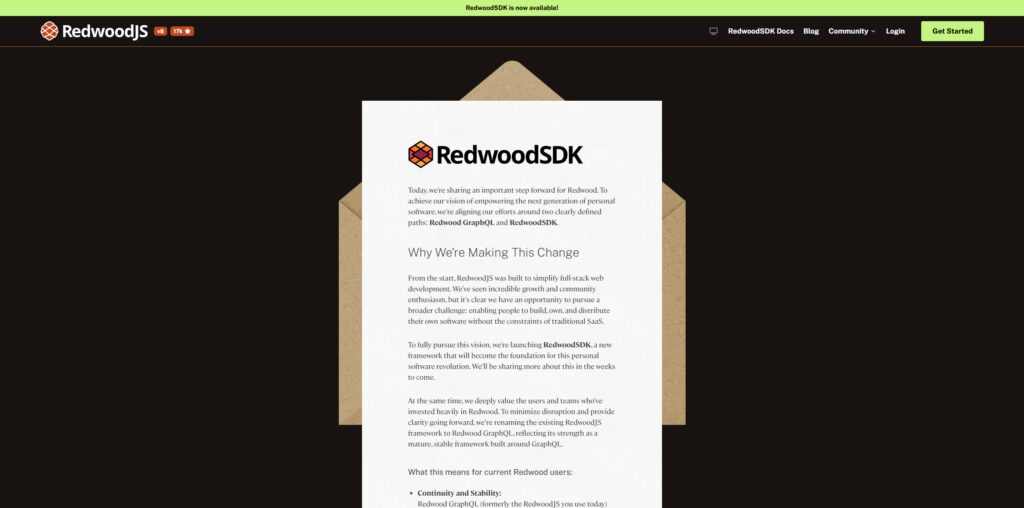
RedwoodJS is more opinionated and “full stack.” It bundles React, GraphQL (via Prisma), a backend layer, and conventions for building JAMstack or serverless apps.
If you like convention over configuration and prefer a more integrated, batteries-included stack, Redwood might appeal.
Astro + React
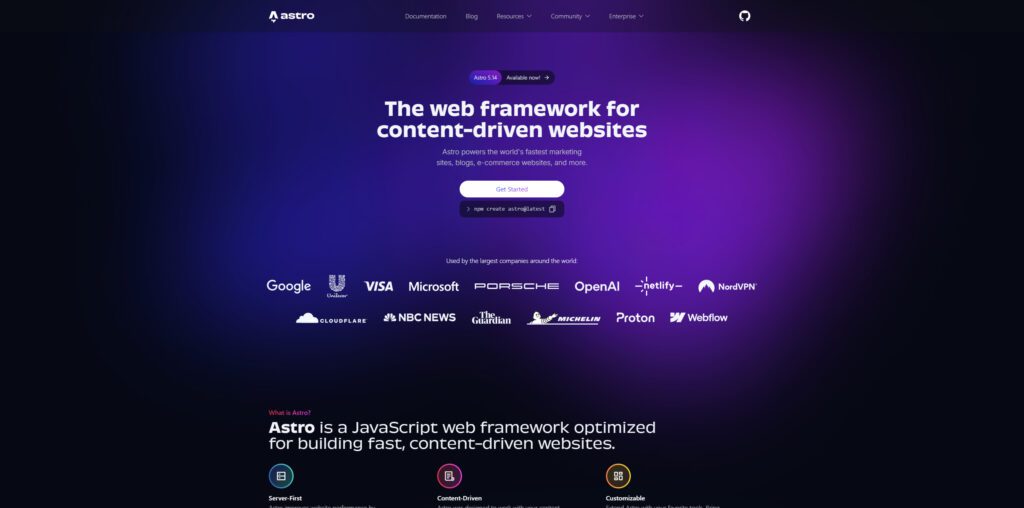
Though Astro is not strictly a “React framework,” it deserves mention because it allows you to use React components inside a broader rendering model (island architecture, partial hydration). In 2024 Astro gained traction, and many expect it to rise further in 2025.
Astro lets you mix frameworks (React, Svelte, Vue) and only hydrates what’s needed on the client, which helps with performance.
Vite / Meta frameworks built on Vite
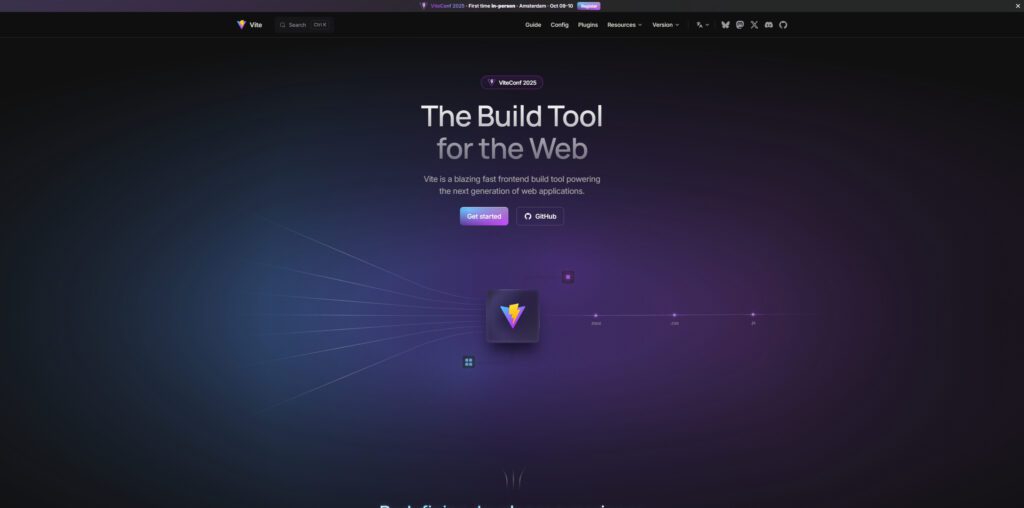
While strictly speaking Vite is a build tool, many modern React frameworks or templates are built on it. Its speed and modern features (like fast dev server, module hot reload) make it a core choice for many new React setups.
Also, frameworks built around Vite, such as TanStack Start (emerging) are on the radar.
Comparing them: strengths, trade-offs, and decision factors
It helps to think in terms of trade-offs. No framework is universally “best.” Here are key dimensions to compare:
Rendering modes & performance
Some frameworks lean more SSR, others SSG, others hybrid or edge first.
- If you need rich interactivity + SEO + fast time to first meaningful paint, frameworks that support SSR or streaming (like Next.js or Remix) are strong options.
- If your site is mostly static or content driven, hybrid/SSG approaches (e.g. Gatsby, Astro) may suffice and reduce client load.
- If your app is dynamic (lots of user state, dashboards, real-time), frameworks with good client hydration strategies matter.
Developer experience & conventions
- Next.js is flexible; you can build however you want, but this gives more decision surface.
- Remix pushes you toward its data loading patterns (which many find clean).
- Redwood is more opinionated — you “buy in” to the stack.
- Astro gives freedom to mix frameworks but requires thinking in island/partial hydration terms.
Ecosystem & plugins
- Next.js has the richest ecosystem (Vercel integrations, plugins, community).
- Gatsby has a large plugin library especially for data sources (CMS, markdown, images).
- Remix / React Router have increasing community support but somewhat narrower scope.
- Redwood’s ecosystem is more niche, but strong if you adopt the full stack.
Deployment & infrastructure
- Next.js and Remix are optimized for serverless / edge environments.
- Redwood is built for serverless backends (GraphQL, functions).
- Astro works well on static hosting or hybrids.
Community adoption & longevity
While React still dominates in usage and demand, alternative frameworks such as Svelte, Solid, and Qwik are gaining attention for performance and simpler paradigms.
That said, many guides caution that if long term stability matters, sticking with mature frameworks like Next or Remix is safer.
What I’d pick depending on project type
Let me give you advice as though you are picking for your next project.
- Marketing / content site / blog
Use Next.js (SSG mode) or Gatsby. If content is your center, the plugin ecosystems (CMS sourcing, image optimization) are strengths. - Customer dashboard / SaaS app
Choose Next.js or Remix for server rendering, good client hydration strategies, and flexible data fetching. - Full stack with backend API / GraphQL
Try RedwoodJS if you like convention, or combine Next.js with a backend (or use Next.js API routes). - Performance-critical / partly static / interactive hybrid
Consider Astro + React to only hydrate what’s necessary. - Experimentation / bleeding edge
You might try newer frameworks built on Vite or small meta frameworks (like TanStack Start), but be ready for trade-offs in support.
Remember: you can migrate later, but picking a good starting point saves headaches.
Looking ahead: trends & what to watch
- React Server Components are now influencing framework design heavily (reducing JS sent to client).
- Edge rendering and distributing logic closer to user are growing priorities.
- Newer “start” or meta frameworks built on Vite may shift the balance of choice and performance.
- Some devs are questioning if React will remain central, exploring alternatives like Svelte, Solid, or Qwik for new projects.
In short: framework choice in 2025 is more meaningful than ever.
Conclusion
You’ve walked through how we arrived at today’s React framework ecosystem, seen the major players (Next.js, Remix, Gatsby, RedwoodJS, Astro), and learned how to compare them.
If I were advising you: start with Next.js unless you have a strong reason otherwise. It offers balance, ecosystem, flexibility, and long term viability. But if your project has specific patterns (e.g. content site, full stack, performance constraints), other frameworks may shine more.






